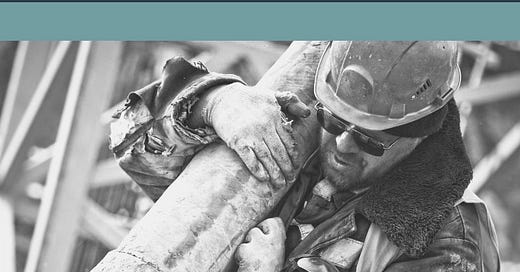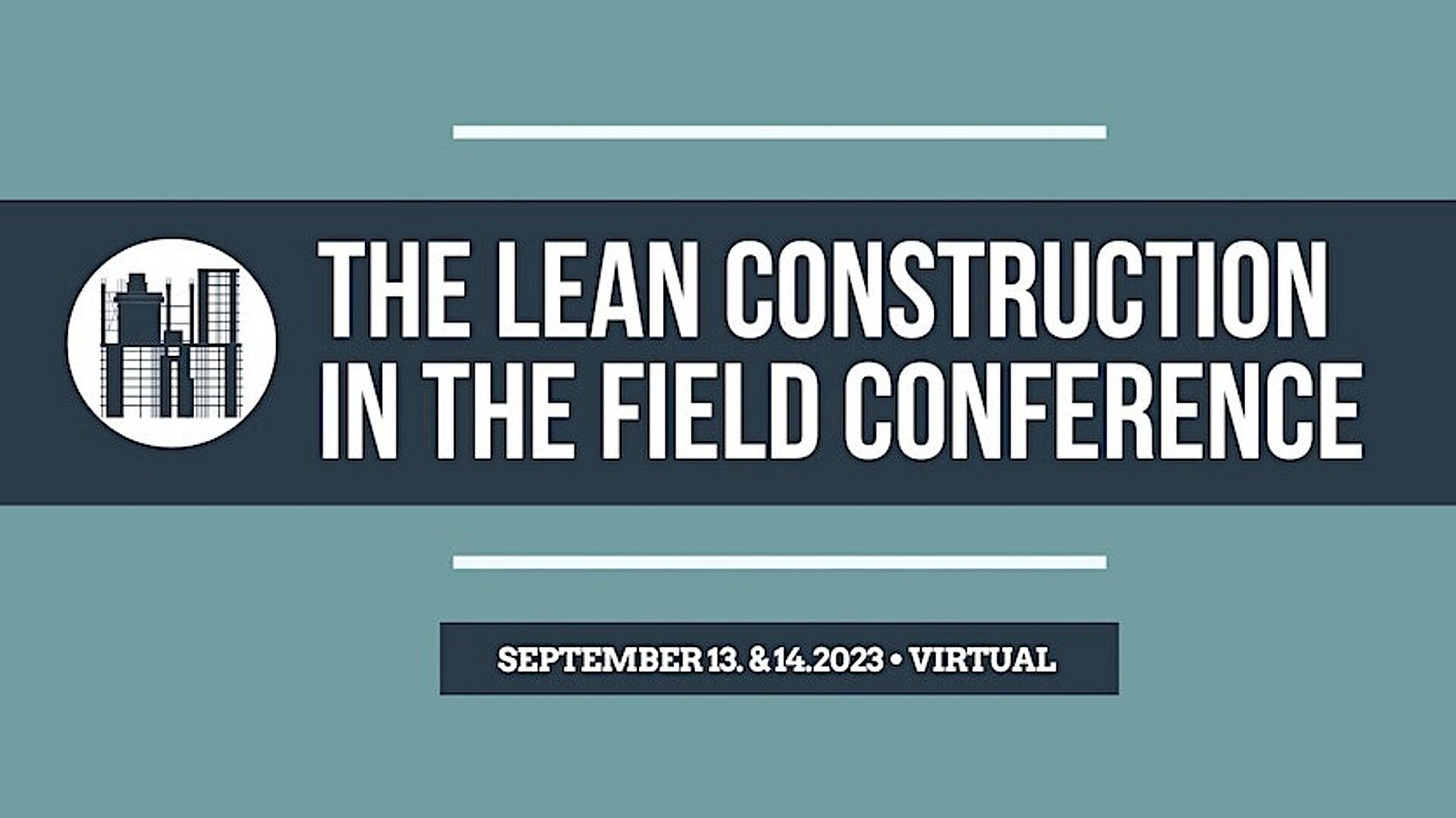The Lean Construction in the Field Conference
Practical knowledge for your lean construction journey.
👋 Hey, Kyle here! Welcome to The Influential Project Manager, a weekly newsletter covering the essentials of successful project leadership.
Today’s Overview:
Last week, I had the honor of speaking at the 4th annual Lean Construction in the Field Conference hosted by the Lean Construction Blog. This piece shares my top questions and answers fielded during my panel session.
The event, led by Lean practitioners, highlighted the best practices for applying Lean Construction on-site. Designed for construction professionals like superintendents, project managers, engineers, and field crews, the conference aimed to enhance the efficiency, effectiveness, and safety of their projects.
We discussed some important topics in the field of Lean Construction including: how to engage superintendents and trade partners with Lean Construction, driving continuous improvement, how to develop capabilities, and building a respectful lean culture.
10 Questions From The 2023 Lean Construction in the Field Conference
Last week, I had the honor of speaking at the 4th annual Lean Construction in the Field Conference hosted by the Lean Construction Blog.
This event was not just a platform for knowledge exchange; it was a network for innovation in our industry.
I recommend that every professional in the built environment access the event recording—it's a great opportunity to gain insights from seasoned practitioners, connect with industry colleagues, and elevate your approach to project management.
In my panel session, we dove into several important questions, such as:
What are the primary challenges, and how can we navigate them?
How do you handle establishing clear lean expectations from a contracting perspective?
What techniques and tactics have you found to be successful or valuable?
How do you approach implementation and what are some of the small actions that have had big results?
For today’s newsletter, I'm excited to share the top questions and answers from my panel session. Enjoy!
1. Tell us more about yourself, what project(s) you are working on, where you are at in your Lean journey and how it has changed along the way?
Certainly. I started in construction as a laborer working for a small local landscape construction company. Today I build world-class Healthcare projects in Southern California for a national construction management firm, Layton Construction.
My construction experience spans land development, commercial hospitality, mixed use buildings, ultimately leading me to now where I specialize in healthcare construction projects.
My Lean journey began 5 years ago with curiosity to do things better, matured with application, and today it's a passion. Over time, I've seen it not just as a set of tools but a mindset that leads to better outcomes.
2. What techniques and tactics have you found to be successful or valuable?
In my experience, the following techniques have consistently proven to be invaluable for lean construction:
The 5S Method: Streamlines work spaces and processes.
Pull Planning: Ensures that work flows smoothly by planning tasks based on actual progress and constraints.
The Last Planner System: A collaborative planning framework used in construction scheduling. By involving the people doing the work in different stages of planning, you get a more reliable schedule.
A3 Reporting: A structured approach to solving problems and communication, while driving continuous improvement.
These strategies stand out because they not only minimize waste but also optimize workflow, leading to better project outcomes.
3. Have there been any challenges or setbacks that eventually paved the way for success?
Absolutely. On one particular project, our team grappled with frequent delays due to communication issues. This challenge highlighted the importance of clear and timely communication. To address this, we revamped our workspace to facilitate visual communication.
We turned our work and office space into a transparent dashboard. Our schedules, objectives, and constraints were displayed clearly so everyone could understand our project's status instantly. This experience showed us how proactive, clear communication can be the difference between stagnation and progress.
4. Continuous improvement is a foundational part of Lean culture and tools, what actions and activities have you found make a difference?
Two monthly actions significantly promote continuous improvement on my projects:
Monthly Internal Training Sessions: In these sessions, each team member teaches the group about a topic they're knowledgeable in. This not only spreads best practices but also helps in refining personal understanding, improving communication skills, and strengthening team bonds.
Monthly Subcontractor Training Sessions: Here, our trade partners guide us through their specialized fields, helping everyone understand the intricacies of their trade.
Both practices demonstrate respect for all participants and reinforce a commitment to constant growth and improvement.
5. With respect for people as a foundational part of lean, how do you build or foster a lean culture in the field?
It starts with listening and striving to see everyone’s perspective.
To do this, I prioritize understanding the needs and concerns of every team member, ensuring everyone has the tools and knowledge they need, and recognizing their contributions. A respected team is an engaged and motivated team.
6. In a lean construction project, how do you handle subcontractor contracts, establish clear expectations, and promote a respectful working culture?
It's crucial to define lean expectations from the day one. Every RFP, work order, exhibit, or contract should explicitly mention the intended lean practices.
This includes directives like wall coordination, material storage, concepts like “nothing hits the floor,” daily morning huddles, 5S-ing, and any other lean principle. By incorporating these lean principles into a trade partner's contract from the start, we build a relationship rooted in clarity and alignment.
If not, history shows that subcontractors may find fault with merits of such systems and attempt to back charge or resist at a later date. We need to be fair with all trade partners and be very clear about expectations throughout the project.
7. Owners don’t always understand or support lean, how does this influence lean project execution for you?
It's a challenge, but it also presents an opportunity to educate.
I focus on showcasing the tangible benefits of Lean—like reduced waste, better timelines, and optimal budgets—which often speaks louder than theory.
8. You are in the field and on the front lines implementing lean, how does the Leadership in your company support you, and why is that important?
Yes, their support is very important. Leadership provides us with the tools, training, and autonomy we need.
Their trust in our expertise empowers us to make decisions and innovate. This support is crucial for implementing with confidence and maintaining momentum needed to get past the initial barriers and resistance.
9. Lean implementation takes many different forms, but we all know that little things can make a big difference, especially in lean. How do you approach implementation and what are some of the small actions that have had big results?
I advocate for starting small. If I were starting my lean construction journey from scratch, I would start with one key habit:
The 5S Method: The Fundamental Building Block of Lean.
Why? Because until you have things in order, it can be difficult to see waste in a process, site, or organization. How can you standardize when things are chaotic and it is not easy to clearly understand what is being done or where problems are being encountered?
5S is an environment where everything thrives. Once things are in order and sustained, it becomes easy to identify opportunities and make continuous improvements.
Get addicted to cleanliness and organization. All of the great builders in construction are clean and organized. Cleanliness and organization will affect every other single that you do, whether it be planning, the execution of construction, or closing out.
So dive into Lean Construction with 5S – whether it's for your desk, offices, job sites, Conex boxes, or even file management.
Start small but start fast. Once you have 5S your work spaces, you will experience the domino effect that enables all other successful habits.
You will unlock your ability to optimize the behaviors of people on the project and introduce additional lean techniques, tactics, and processes.
10. What advice would you offer to anyone watching who is at the beginning of their lean journey or needing to re-energize lean?
Implementing lean construction processes can sometimes feel like trying to nail jelly to a wall.
If your team isn't catching your lean vision, your approach might be off.
Expect resistance when introducing change. In the face of this resistance, I’m reminded of Antoine de Saint-Exupery’s wisdom:
“If you want to build a ship, don’t drum up the people to gather wood, divide the work, and give orders. Instead, teach them to yearn for the vast endless sea.”
We know that the command and control approach doesn’t work.
Instead, focus on showing people broader vision. Rather than just assigning new tasks, tools, & processes, teach them to yearn for the war against waste and variation.
They cause delays, ruin productivity, lead to confusion, create unsafe environments, and make you lose control.
Use your lean construction effort to involve them in a cause, a crusade against the enemy. This fight will fuel them with passion and drive.
When individuals see the personal benefits, group benefits, and alignment with their goals, they are more inclined to embrace the lean journey.
Final Thoughts
Lean Construction is a journey that starts first with being exposed to a better way of doing things. We need to spend the time to learn. Learning leads to action and implementation.
If we want to implement lean, we first must learn what it is and how to put it into action. Stay curious, open-minded, and expand your time horizon.
Engage with mentors, keep iterating, and remember: every step, no matter how small, is progress.
You’ll soon look back after a period and notice how far you’ve come, how much more efficient things are, and how many additional benefits you have unlocked.
Until next week,
Kyle Nitchen
Influential Ideas
🎧 Podcast Appearance: Bricks & Bytes Podcast
In this episode, we talk about what makes a great project manager and why/how construction project managers like myself adopt technology on our sites. Some things we cover:
What make a great project manager
Pain points on site that technology can solve
The importance of soft skills
What makes great leaders
Ways to improve content and writing skills
Listen to the episode here: Apple | Spotify
Thanks for reading! Want to work together?
📣 Want your product or service featured in this newsletter?
Sponsor 'The Influential Project Manager' and directly engage our dedicated community of 2,000+ construction pros. They trust our weekly insights to boost leadership and project success.
☎ 1-on-1 Coaching
Are you interested in diving deeper into a particular topic or strategy? Book time with me for a 1:1 coaching or strategy session.
🎙 Interviews
Occasionally I guest appear on podcast shows to discuss leadership, construction project management, and continuous improvement. If you have a show and interested in interviewing me, feel free to get in touch.
📧 Support this Newsletter
The Influential Project Manager articles will remain free, but if you find this work valuable, I encourage you to become a paid subscriber. As a paid subscriber, you’ll help support this work.








